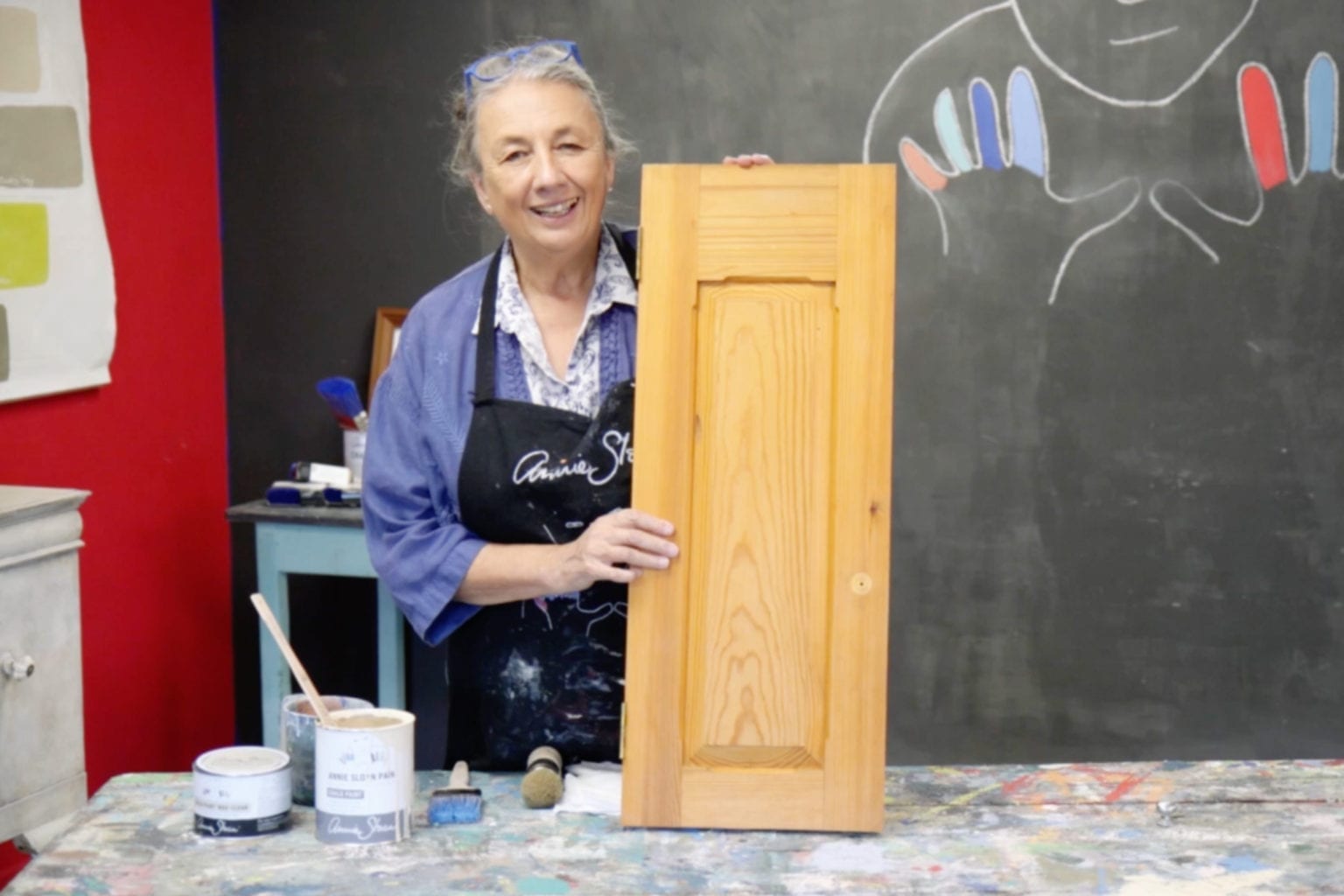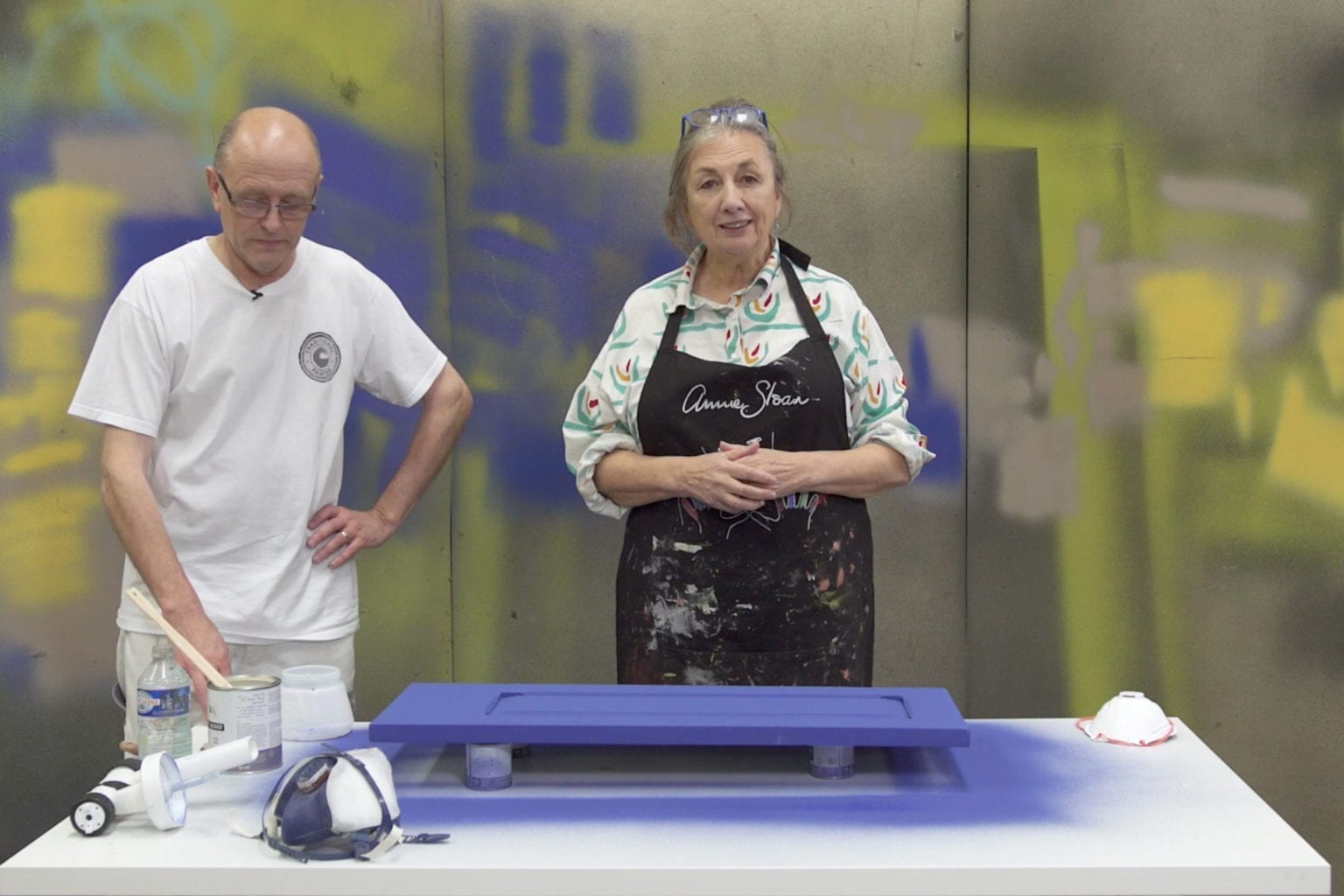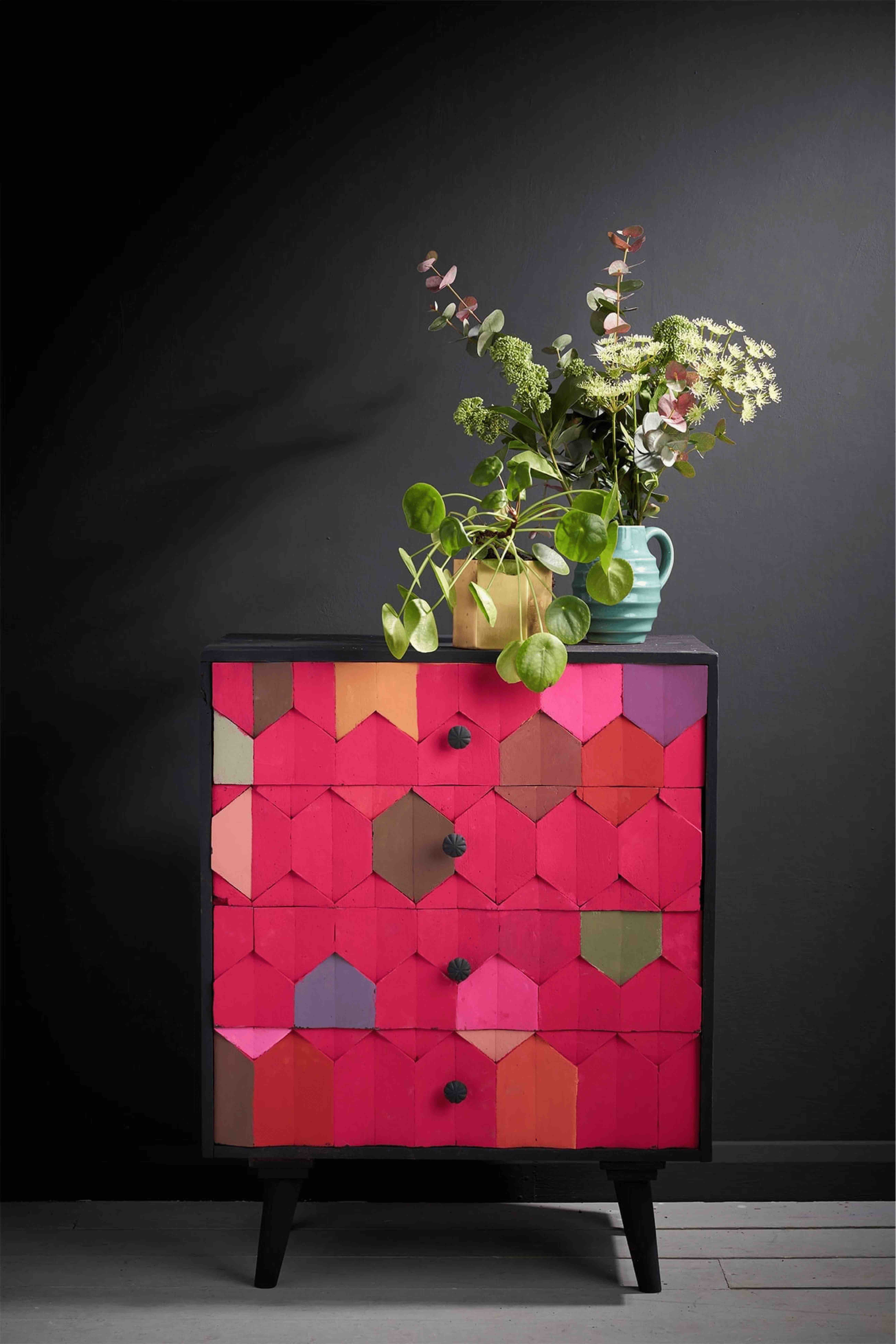Too many cabinets and too little time? Follow this tutorial to learn everything you need to know about spraying Chalk Paint® for a smooth finish. Using a spray gun to apply paint is a more advanced technique – you’ll need some specialist kit – but is a great way to paint large areas quickly and to a high spec.
If you don’t like the textured look, this is an effective way of achieving a silky smooth, uniform finish. Lots of people do this to paint their kitchen cabinets – it’s much more cost effective than investing in a whole new kitchen! Spray on your Chalk Paint® first and then finish by applying Chalk Paint® Lacquer with a spray gun, too.
This tutorial is long and detailed. We’ve covered as much as we can to cater for all abilities and to make sure you get the best result possible. Make sure you watch this video first and then follow up with our tutorial on spraying Lacquer next.
You will need:
• Chalk Paint®
• Water
• A spray gun (in this tutorial, we’ve used the Wagner 2370386 Studio Home Décor Sprayer which is an HVLP spray gun)
• Respirator mask / partical mask
How does it work?
A spray gun works by combining pressurised air and paint. The paint is atomised into small particles which are sprayed onto a surface for an even finish. It’s a quick and effective way to paint large areas, but does require forethought and preparation. If you’re a beginner, we recommend painting with Chalk Paint® first.
Firstly, paint is added to the pot of the gun. The gun is connected to a hose and a turbine which provides the air stream to spray the paint. That turbine will force air through the front of the gun and atomise the paint, breaking it into small particles. A tube connecting the paint pot and gun pressurises the paint forcing it up the tube, and when you pull the trigger, the paint and the air meet and are sprayed onto the surface.
The spray gun we are using is called a ‘bleeder’ gun; there is no air adjustment only a fluid adjustment. This means the amount of air travelling through it is constant. It’s the amount of paint flowing through the gun that affects the rate of spray. You can change the rate of flow with a numbered dial. On our spray gun, we set the dial to 2 for Chalk Paint®.
How to spray with Chalk Paint®
- Fill the spray gun pot about halfway with Chalk Paint®.
- Now thin the paint by adding very small amounts of water at a time, stirring thoroughly to ensure the paint and water is fully combined. It’s important not to thin the paint too quickly. An indicator of viscosity is lifting the paint from a height and watching it drop back into the tin. If it leaves a 3D trail on the surface of the paint, called a ‘worm cast’, then it is too thick. When the paint is lifted up and there are no worm casts left behind, it is the right consistency and ready for application.
- Once the paint is mixed, it’s time to prep the gun. First, orientate the paint tube to face downwards when you’ll be spraying. Gravity will dictate the paint to fall to the bottom of the pot which will change depending on the angle you are spraying at. So if you’re spraying downwards, you want the tube end to face downwards too. If you are spraying up, you will want the tube facing the other way, so it’s always immersed in paint.
- Next, attach the pot to the gun. It’s easiest to do this on a table surface when it’s full of paint – less room for spillages! Make sure it’s attached tightly.
- Connect the turbine tube to the gun.
- Change the angle of the nozzle horns to the direction you will be spraying. If you’re spraying left to right, the horns want to be horizontal. If you’re spraying up and down the horns want to be vertical. If the opposite is done, a build-up of paint will occur on the surface. You can reach a happy medium in the middle if you need a thinner width spray.
- Put on your mask. It is crucial to wear a respiratory mask at all times when spraying paint. The airborne paint particles can cause respiratory problems if inhaled and no mask is worn.
- Set the flow dial to 2 and spray the paint on a test surface. You are testing the consistency of the paint is right and that the gun is working as expected before
- Once you’re satisfied, you’re ready to spray your piece. Do the edges and tricky bits first. Then apply the paint in lines, working in a logical motion. It’s important to overlap each line of paint by 50%, to ensure complete coverage. Be consistent with the coverage so as to keep the finish even.
- Apply a second coat in the same manner to make sure no area has been missed. When applying a second coat, you can either spray immediately after the first coat, before the paint has started to dry. Or, wait an hour or so for the first coat to fully dry. The surface will begin to dry after 2 minutes, so if you don’t start applying the second coat immediately after the first, you will need to wait the full hour or you won’t achieve an even finish.
- Apply the second coat in the same manner of the first.
- Leave to dry in an area where your painted pieces won’t need to be moved, as any contact with the dry paint will blemish the surface.
- Once fully dry, either apply Chalk Paint® Wax or Lacquer. Apply the wax with a brush, and apply the lacquer with either a brush, roller or spray gun.
Now you’ve followed the tutorial, you can see how effective spraying Chalk Paint® can be for achieving an even finish, quickly and to a professional standard. For extra durability, especially if you’re working on surfaces that will be frequently handled, make sure you follow our tutorial on spraying with Chalk Paint® Lacquer. This is a particularly handy how-to if you want to achieve a smooth and uniform finish on kitchen cabinets and doors.


